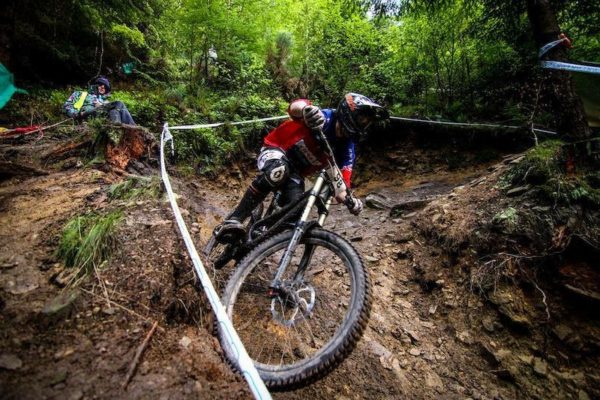Downhill mountain biking is a genre of mountain biking practised on steep, rough terrain that often features such as jumps, drops, rock gardens and other obstacles. In competitive races, a continuous course is defined on each side by a strip of tape. Depending on the format, riders have a single or double attempt to reach the finish line as fast as possible, while remaining between the two tapes designating the course. Riders must choose their line by compromising between the shortest possible line and the line that can be travelled at the highest speed. Riders start at intervals, often seeded from slowest to fastest, and courses typically take two to five minutes to complete with winning margins being often less than a second. Downhill racers must possess a unique combination of total body strength, aerobic and anaerobic fitness, mental control, as well as the acceptance of a relatively high risk of incurring serious injury. Because of the extremely steep terrain, downhill is one of the most extreme and dangerous cycling disciplines. Minimum body protection in a true downhill setting entails wearing knee pads and a full-face helmet with goggles, albeit riders and racers commonly wear full-body suits that include padding at various locations.
Downhill-specific bikes are universally equipped with front and rear suspension, large disc brakes, and use heavier frame tubing than other mountain bikes. Downhill frames have anywhere from 6.7–9.8 inches of travel and are usually equipped with a 7.9 inches travel dual-crown fork.




